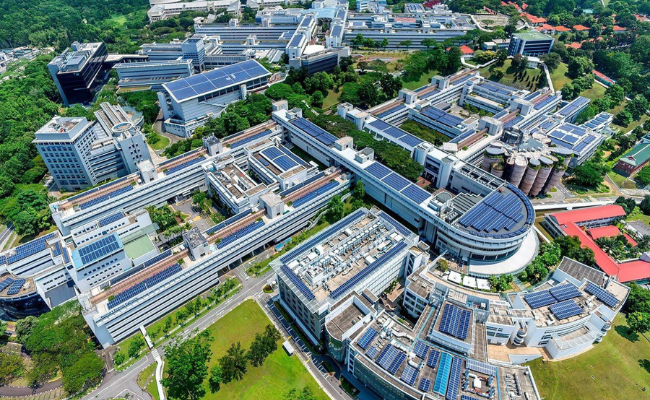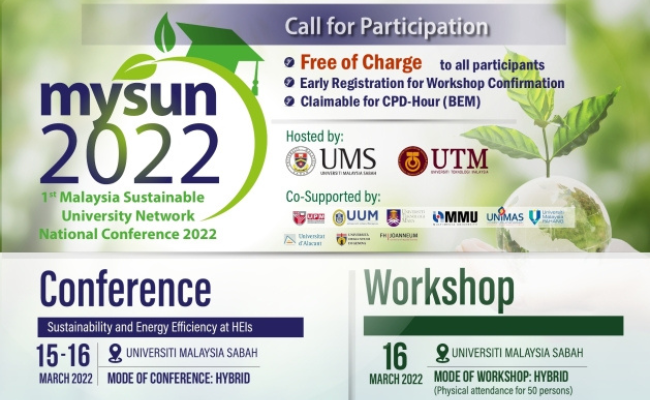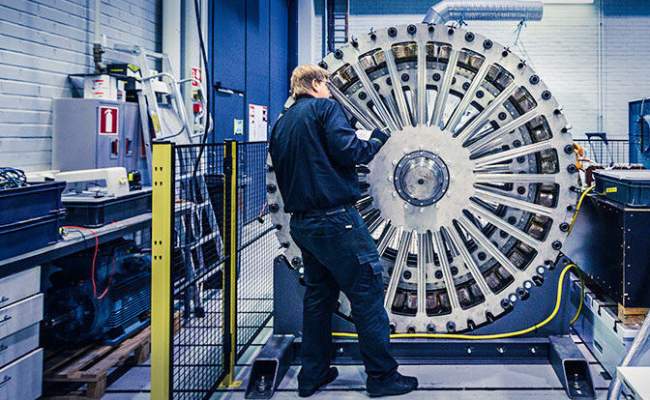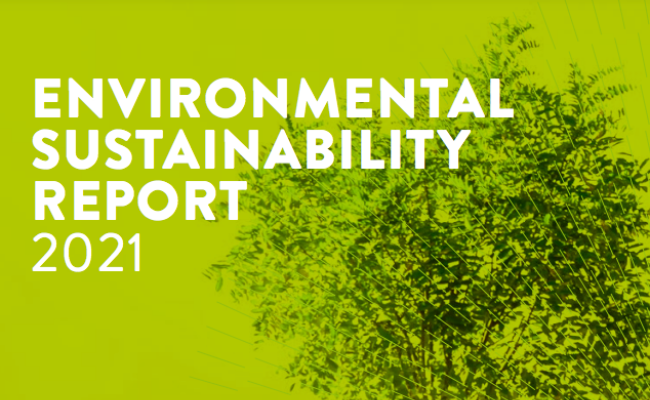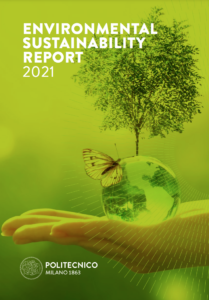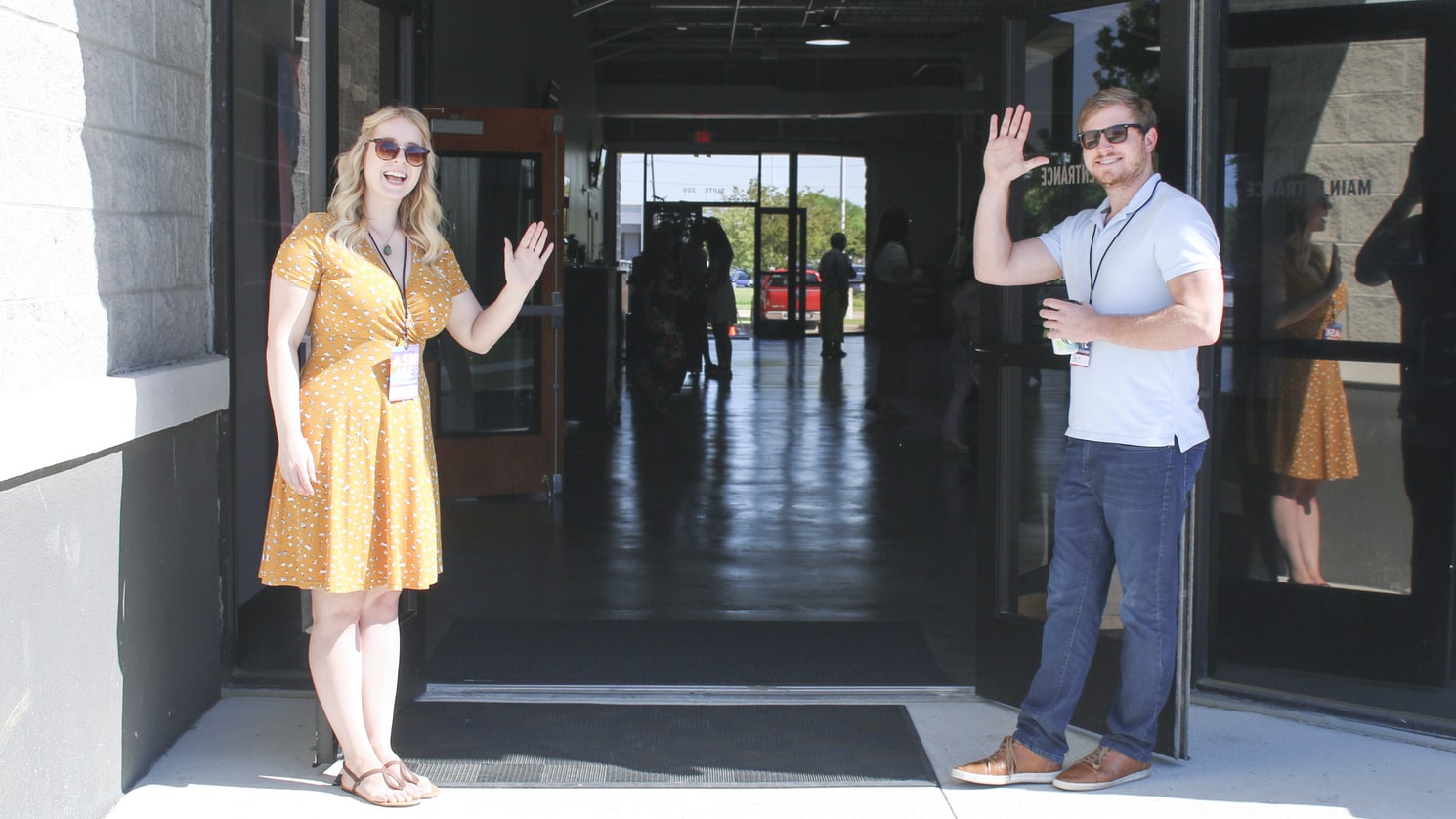NTU opens sustainability office
Nanyang Technological University (NTU) in Singapore has opened a new Sustainability Office to coordinate and drive NTU’s sustainability efforts in a holistic and integrated way. To build on this momentum, the University has also released a 15-year Sustainability Manifesto. The Manifesto reflects NTU’s commitment to decarbonisation and sustainable development and will guide the University towards their goal of carbon neutrality by 2035.
The NTU Sustainability Manifesto recognises that sustainability is a grand and complex global challenge involving all sectors and all of society. To that end, in addition to striving for carbon neutrality, the University aims to:
- Incorporate sustainability in its newly established interdisciplinary common core curriculum for all undergraduate students;
- Launch new undergraduate, postgraduate and continuing education programme options on different aspects of sustainability;
- Support and promote the principles of the United Nations Sustainable Development Goals across the pillars of education, research, innovation and community;
- Achieve 100% Green Mark Platinum certification for all eligible buildings on the main NTU campus; and
- Reduce by 50 per cent NTU’s net energy utilisation, water usage, and waste generation, by March 2026, compared to the baseline levels of 2011.
Learn more about NTU's sustainability work.
1st Malaysia Sustainable Network National [Hybrid] Conference
The University of Genoa is committed to promote sustainable development in its campuses and among the local territory through various initiatives. In particular, the Savona Campus collaborates with some Malaysian universities to promote sustainability and energy efficiency in Malaysian university campuses, within the Erasmus+ CBHE funded project named MYSUN. This network of MY universities has organized the Free of Charge 1st Malaysia Sustainable Network National Conference, to be held on March 15, 16 2022. The event will be conducted in a Hybrid mode: online via a videoconferencing platform and at Universiti Malaysia Sabah.
The conference will be accompanied by a series of workshops on campus sustainability-related topics, especially devoted to Higher Education Institutions (HEIs), and will provide opportunities to exchange ideas and research experiences, as well as to establish research collaborations with global partners.
You can find more info and the registration link on https://www.mysuncampus.eu/en/conferences/1st-malaysia-sustainable-university-network-national-conference
@MYSUNcampus
#sustainablecampus #MYSUNcampus #ErasmusPlus #mysun2022
Updates about the conference and the MYSUN project:
Facebook: https://www.facebook.com/mysuncampus
Instagram: https://www.instagram.com/mysuncampus/
Twitter: https://twitter.com/mysuncampus/
LUT: Carbon negative by 2024
Photo: Energy-related greenhouse gas emissions represent more than 70 % of all greenhouse gas emissions produced by humans. Through its research, LUT produces material-wise and low-emission solutions. The photo shows a liquid-cooled permanent magnet motor.
LUT University targets carbon negativity by the end of 2024. It is an ambitious goal, the achievement of which is monitored by the Greenhouse Gas Protocol.
Professor Risto Soukka, Associate Professor Mika Luoranen and Sustainability Manager Kati Koikkalainen explain LUT University's target for carbon negativity.
1. What is a carbon footprint?
LUT's carbon footprint refers to climate (carbon dioxide) emissions caused by the activities of the organisation and its people. The reported carbon footprint includes both direct and indirect emissions. For example, cars owned by LUT cause direct emissions, while emissions from bought electricity and staff commuting are considered indirect.
In 2020, LUT's carbon footprint was 1,593 tons of carbon dioxide equivalent (CO2eq). Mobility accounted for 51.4 per cent of the emissions, while food was the second largest cause for emissions with 18.6 per cent.
LUT calculates its carbon footprint using the Greenhouse Gas Protocol (GHG), which divides emissions into three dimensions or scopes. Scope 3, for example, includes district heating of a property. The calculations are used to analyse which emissions can be reduced and which needs to be compensated for.
The Impact Ranking of Times Higher Education also assesses LUT's work for sustainability and the climate based on the GHG protocol. THE is one of the world's most prestigious university rankings.
2. Who calculates LUT's carbon footprint?
LUT has its own Sustainability Science Carbon Negativity Team, which calculates the carbon footprint annually. The group comprises several experts from the university. The calculations are based on information collected from the university's units and stakeholders.
3. How is LUT's carbon footprint reduced?
The university follows the Climate Action Plan prepared with its staff and students. The programme is part of the management system. In addition, emission reductions are reported annually in sustainability reports.
The aim is to reduce electricity and heat consumption in buildings. The energy efficiency of the Lappeenranta campus has been greatly improved over the last 10 years, and LUT began operating on the energy-efficient Lahti campus in autumn 2019. Part of the campus electricity is produced by solar panels, and the purchased electricity is also produced with renewable energy. Furthermore, the campuses are heated with green district heating.
Another aim is to reduce the emissions from eating by encouraging the staff to eat vegetarian lunches. At the Lappeenranta campus, the canteens of Kampusravintolat Oy place the vegetarian food first on the line, and the carbon footprint of all options is visible.
4. How can LUT achieve carbon negativity?
LUT can achieve carbon negativity by monitoring, reducing and compensating for its emissions. During 2022, LUT will strive to create a consistent and even more accurate way to reduce emissions. It requires regular and automated collection of high-quality data, for example from suppliers.
The calculations show how LUT's carbon footprint is formed and which emissions can be tackled. However, carbon neutrality must be achieved before carbon negativity. Different calculations may be needed for different purposes: a total carbon footprint calculation of LUT University and a calculation that defines the need for compensation, based on which carbon negativity is achieved.
The goal is to achieve carbon negativity by the end of 2024. Along the way, the calculations are tested, specified and possibly expanded. For example, LUT's investment activities are not currently included in the calculations, whereas emissions from commuting are (GHG protocol scope 3). It is essential for the calculations to include issues that the university can influence and the reduction of which genuinely leads the development into the desired direction.
A negative carbon footprint means to offset more carbon than you contribute to the atmosphere. A partial solution is investing in carbon sinks. LUT University is unlikely to achieve carbon negativity just by reducing emissions – emission compensation is also needed. Nevertheless, LUT carries out goal-oriented and continuous work to reduce emissions as much as possible.
5. Why is achieving carbon negativity challenging?
Achieving carbon negativity is not simple. Collecting high-quality and sufficient information for calculation is challenging. Observing the carbon footprint, carbon neutrality and carbon negativity calculations simultaneously is also a challenge. In addition, emissions compensation costs are high.
A lot of research on energy-intensive industries is carried out at LUT with the aim of reducing greenhouse gas emissions significantly. Reducing emissions from research activities can be difficult in general, not to mention significant reductions. On the other hand, research is expected to help industries reduce emissions.
6. What is a handprint?
An environmental handprint refers to the positive climate and environmental impacts of different actions. At LUT University, the handprint is based on strategic and long-term scientific work carried out in order to achieve the preservation of natural resources, a more efficient material cycle, social sustainability, sustainable business and a cleaner environment and water.
LUT's handprint materializes above all in projects and theses carried out to reduce the carbon footprint of partners and stakeholders. In addition, hundreds of students graduating annually bring sustainability competence to society, which makes them a part of LUT's handprint.
7. Why is LUT striving for carbon negativity?
Clean energy, water and air are preconditions for life, and LUT University seeks solutions to them with expertise in technology and economics. Through its activities, LUT helps society and companies to renew sustainably, which is why the university has also set high targets for carbon negativity.
Carbon negativity is also sensible as it improves efficiency and reduces costs.
"LUT is actively striving to find solutions for combating climate change. LUT is among the top ten universities in the world for climate action. We will continue this work, and our aim is to maintain our position in the ranking", Risto Soukka sums up.
Note: This article was originally published on the LUT website and was lightly edited and re-posted with permission.
Politecnico di Milano: SDGs, Sustainability Reports, and Social Impact
After a deep of mapping their institutional, research, and teaching activities to the 17 Sustainable Development Goals (SDGs) of the UN 2030 Agenda, Politecnico di Milano has created a new section of their website dedicated to sustainable development and the societal impact of the University's activities. Explore POLIMI's social impact page here.
Politecnico di Milano has also released two new sustainability reports, the University Environmental Sustainability Report and the SDGs@Polimi.
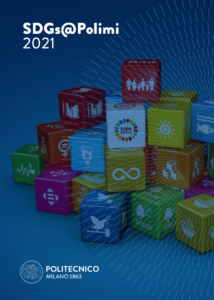
The University Environmental Sustainability Report
POLIMI's 2021 Environmental Sustainability Report strives to spread the culture of sustainability by pursuing and achieving the SDGs. The report covers POLIMI's progress towards the SDGs; the University's Governance and Community Engagement Activities; Research and Education; Climate Action; Buildings, Infrastrcutre, Energy, and Green Spaces; Sustainable Mobility; and the Circular Economy.
The publication of the SDGs@POLIMI Report has the primary objective of collecting and organising in a systematic way the actions carried out by Politecnico di Milano in recent years aimed at supporting the achievement of the 17 Sustainable Development Goals (SDGs).
Smith College launches Year on Climate Change
Smith College is launching a Year on Climate Change, designed to bring a uniquely liberal arts approach to this urgent challenge.
"The Year on Climate Change is a college-wide initiative to critically examine the complex and urgent issue of climate change. As a college of and for the world, this program is an invitation to the entire Smith community, no matter your background or passion, to engage in a manner that is uniquely liberal arts - through deep and authentic collaboration, critical thinking, listening and action. All students, staff, faculty and alumnae are encouraged and invited to create and attend events throughout the year."
To read more, please visit: https://www.smith.edu/about-smith/ycc
Universidad Científica del Sur joins the ISCN!
We are thrilled to formally welcome Universidad Científica del Sur into the ISCN!
Universidad Científica del Sur, located in Lima, Peru, forms leaders committed to human, social and environmental development. It offers quality education for the world of work, based on a personalized education and approach to each profession from the first cycle. The University has a modern infrastructure and the necessary components to become a competitive professional. It has five faculties of Health Sciences, Environmental Sciences, Business Sciences, Human Sciences and Veterinary and Biological Sciences, and a Postgraduate School where it offers important Masters, Specialties, Diplomas, Specialization Programs and courses in Health, Environment, Veterinary and other areas.
"Universidad Científica del Sur, from its origins, was conceived as an institution at the service of man (through its humanistic model) and the care of the environment. Therefore, we established our Campus in Villa El Salvador, which borders the only protected natural area of international importance in Lima: the Los Pantanos de Villa Wildlife Refuge - RVSPV. This is an example of our permanent commitment to environmental care.
In turn, we have been working on the development of a sustainable campus, where we are responsible for our solid waste, water use and carbon footprint.
We have an Operational Environmental Committee that involves academics, researchers and administrative managers, its main function being the promotion and strengthening of environmental management among all members of the university community.
The Plans of Study of all the careers offered by the university count, as part of their theoretical and practical content, the environmental commitment. In this line, we incorporate the environmental dimension in all races, an important differentiating element for us. This is aimed at strengthening their capacities, generating changes in consumption habits, as well as promoting research that contributes to entrepreneurship and sustainable development in the country.
Along these lines, we share with our students the subjects consolidated in the Sustainable Development Goals, recognizing the importance of these goals at the international level."
For more information on sustainability at Universidad Científica del Sur, please visit: https://www.cientifica.edu.pe/sostenibilidad-en-la-cientifica/politica-ambiental-la-cientifica.
“We are delighted to welcome Universidad Científica del Sur into the ISCN and look forward to providing a platform for international value exchange and partnership on campus sustainability” says Bernd Kasemir, Secretary of the ISCN Board.
For more information on the ISCN, please visit: https://international-sustainable-campus-network.org/
For inquiries, please email: [email protected]
Universidad San Ignacio de Loyola joins the ISCN!
We are thrilled to formally welcome Universidad San Ignacio de Loyola into the ISCN!
Universidad San Ignacio de Loyola (USIL) is a private university located in Lima, Peru. Its Undergraduate Programme consists of 8 faculties and 37 careers, and also has a Graduate Programme. USIL has a strong focus on entrepreneurship and hospitality management, consistent with its mission statement, which is to shape competent entrepreneurial professionals who are socially responsible and capable of performing successfully, both domestically and internationally.
Sustainability is one of the four Institucional pillar in USIL and its practice is implemented by the Vice Presidency of Corporate Sustainability (VPCS) through its Sustainable Campus Program. The main objective of the VPCS is to manage USIL´s social, environmental and economic performance of all its operations and providing a quality educational service, through the training of citizens capable of proposing innovative solutions for the sustainable development of Peru and the world.
For more information on sustainability at USIL, please visit: http://sostenibilidad.usil.edu.pe/index.php.
“We are delighted to welcome Universidad San Ignacio de Loyola into the ISCN and look forward to providing a platform for international value exchange and partnership on campus sustainability” says Bernd Kasemir, Secretary of the ISCN Board.
For more information on the ISCN, please visit: https://international-sustainable-campus-network.org/
For inquiries, please email: [email protected]
The University of Melbourne publishes 2018 Sustainability Report
The University of Melbourne (24 June 2019). 2018 Sustainability Report Released. Retrieved from https://sustainablecampus.unimelb.edu.au/sustainability-commitment/news/2018-sustainability-report-released.
2018 Sustainability Report Released
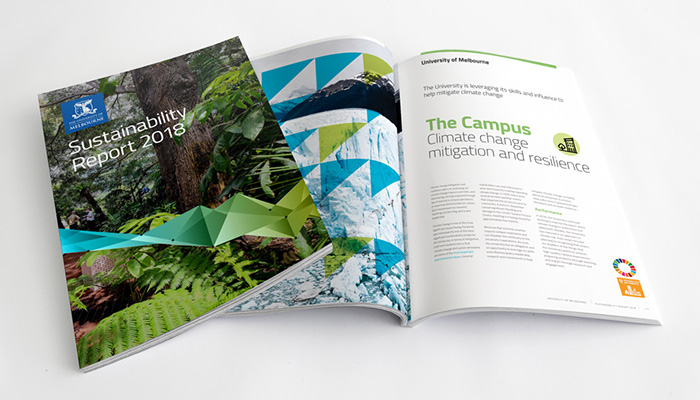
The Report demonstrates our progress and identifies challenges in delivering the University's strong commitment in sustainability.
This report marks a significant point in time, being half way through the Sustainability Plan period 2017 to 2020. It’s an opportunity to reflect on how we can best apply our resources and expertise to address the challenges of environmental sustainability.
The report identifies the University’s major sustainability impacts and how we’re addressing them, highlights a diversity of case studies illustrating the breadth of activities, and assesses our Plan performance, informing our efforts to the end of 2020.
[download id="604"]
University of Neuchâtel joins the ISCN!
We are thrilled to formally welcome University of Neuchâtel into the ISCN!
As a research and teaching institution, the University of Neuchâtel is directly concerned by the many challenges of sustainable development, to which it intends to respond by generating new knowledge, as well as innovative skills and measures. Its community of about 5,400 members aims to provide a living environment that promotes solidarity and respects the environment. For more information on sustainabiltiy at the University of Neuchâtel, please visit: http://www.unine.ch/durable.
“We are delighted to welcome University of Neuchâtel into the ISCN and look forward to providing a platform for international value exchange and partnership on campus sustainability” says Bernd Kasemir, Secretary of the ISCN Board.
For more information on the ISCN, please visit: https://international-sustainable-campus-network.org/
For inquiries, please email: [email protected]
Simon Fraser University joins the ISCN!
We are thrilled to formally welcome Simon Fraser University into the ISCN!
Born in 1965, SFU has become Canada's leading comprehensive university with vibrant campuses in British Columbia's largest municipalities — Vancouver, Burnaby and Surrey — and deep roots in partner communities throughout the province and around the world.
Simon Fraser University is an institutional leader in pursuing ecological, social and economic sustainability through its operations, research, academics, campus and community engagement. For more information on Sustainability at SFU, please visit: http://www.sfu.ca/sustainability.html.
“We are delighted to welcome Simon Fraser University into the ISCN and look forward to providing a platform for international value exchange and partnership on campus sustainability” says Bernd Kasemir, Secretary of the ISCN Board.
For more information on the ISCN, please visit: https://international-sustainable-campus-network.org/
For inquiries, please email: [email protected]
